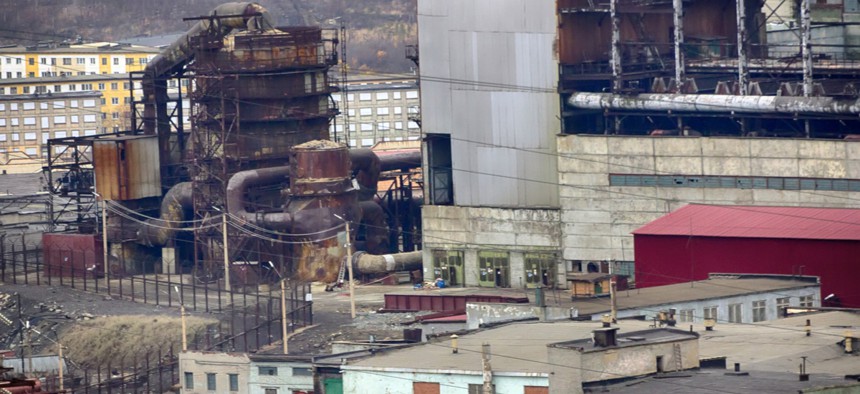Forget Fixing NAFTA. Give Rural Americans Broadband Internet and Clean Water

Maksimilian/Shutterstock.com
The manufacturing era Trump is seeking to recreate has been killed by globalization and technological change.
U.S. negotiators will push for a series of protectionist measures at negotiations over the North American Free Trade Agreement this week. These include the demand that a higher share of the parts and components in goods traded between the three countries be made in the U.S.
Under the Trump rationale, more demand for American parts would improve the business case for re-opening shuttered factories in some of the areas that voted him into the White House. But while few would argue that those economically depressed places are in need of revamping, economists, industry analysts, and manufacturers themselves say reducing trade is not the way to do it.
The manufacturing era Trump is seeking to recreate has been killed by globalization and technological change. What many of those communities need is to move on to the next thing.
The Rust Belt needs a better connection to the rest of the world
To make it in the digital economy, the first step is to plug in. Nearly 40% of residents in the rural U.S. remain without access to broadband. That includes many of the small towns whose economic bottom felt out when manufacturers left.
Stuck on the digital fringes, they stand little chance of attracting any kind of outside employer, says Roberto Gallardo, a regional economy specialist at Purdue University. It also puts them at risk of losing the little industry they still have. “If you really want to make sure these towns remain, the first thing you’ve got to do is get them wired,” he says. “That’s a must.”
A speedy connection can save the livelihood of local stores and artisans by linking them to buyers around the world, or allow locals to earn a decent living by telecommuting.
Survival is a big victory in itself, but digitally savvy entrepreneurs could also use broadband to build new businesses—and create new jobs. Gallardo says it’s early days to measure the economic impact internet access would bring to small towns, but it’s clear that they will only grow more isolated without it.
One major obstacle to getting those communities plugged in has been that federal funds often go to the big carriers, says Marty Newell, who coordinates rural broadband policy at the Center for Rural Strategies, which focuses on rural development. “The big guys, they are not that interested in the last folks at the head of the holler or the people who are farthest from the county seat,” he adds. “The profit is not nearly as lucrative there.”
It’s still unclear whether the Trump administration will change that approach. His new infrastructure plan assigns no new money for broadband specifically, just a general pool of funds for rural projects. Communities could potentially use those to build up internet connectivity.
Just as important will be building up digital skills, says Gallardo. Without them, broadband could just become a way for rural Americans to get Facebook and Netflix.
New business along the shore
Trump appears to be fixated on manufacturing, but there are other industries with a brighter future. The federal government could play a role building them up. It already has.
The Obama administration launched a program called Great Lakes Restoration Initiative, a fund to clean up the pollution left by the manufacturing industry that once powered the region’s economy.
So far, the GLRI, as the program is known, has helped pay for more than 3,000 projects that are spawning new businesses such as kayak rentals, marinas, and fishing outlets, says Matt Doss, policy director at the Great Lakes Commission, a coalition of states. The restored lakes and rivers are helping the economy in other ways, for example, by making formerly industrial towns attractive for white-collar workers, their employers, and millennials. It’s also turning contaminated lake shores into prime real estate for economic development and raising property values.
“It’s possible for people to return back to the water,” says Doss. “In the last century, the waterfronts were a place for heavy industry, there was a lot of pollution. The lake wasn’t a desirable place for people.”
The program is widely seen as a success, including by current Environmental Protection Agency administrator Scott Pruitt. “As we now understand more than ever, we don’t have to choose between the health of our environment and the health of our economy—we can have both,” he said of GLRI last year.
Yet, in its latest budget proposal the Trump administration proposed to cut the program’s funding by 90% to $30 million. If what he wants are jobs and economic growth, he might want to reconsider.





